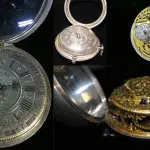
Leadership apologizes after report finds systemic racism at human rights museum
WINNIPEG — Leadership at the Canadian Museum for Human Rights is apologizing after an independent report found employees experienced systemic racism and other mistreatment while working at the Winnipeg institution.
“I apologize that it took a public crisis for the organization to seriously reflect on the issues of systemic racism, homophobia and other forms of oppression,” said Pauline Rafferty, the museum’s board chair and interim CEO, in a news release Wednesday.
The third-party report reviewed allegations of racism, homophobia and censorship by current and former employees. The museum closed Wednesday and Thursday to give staff an opportunity to review the report.
After the museum posted images of a Justice for Black Lives rally in June, stories from employees were posted online by a group called CMHR Stop Lying. Current and former employees responded that it was hypocritical of the museum to bring up the Black Lives rally because of racism they faced at work.


